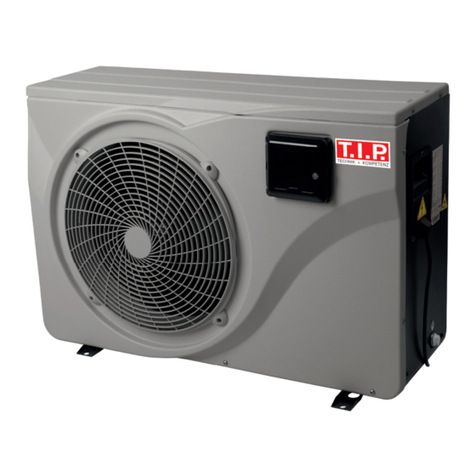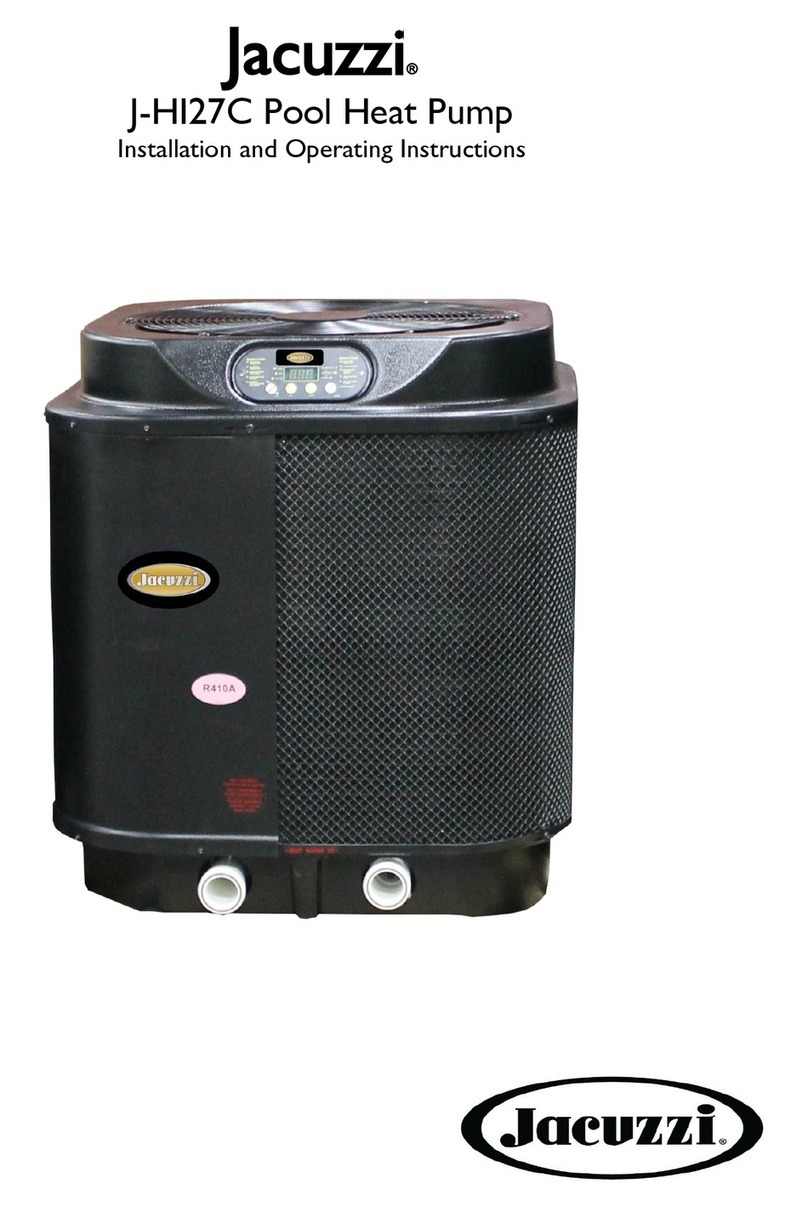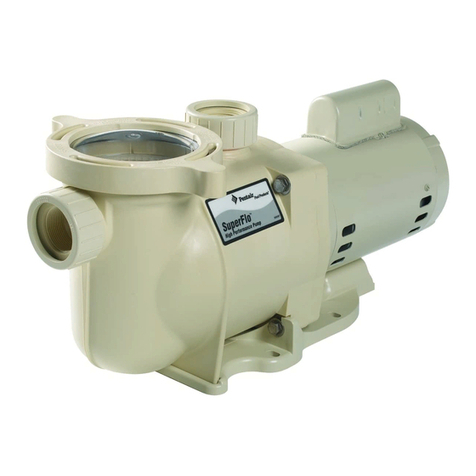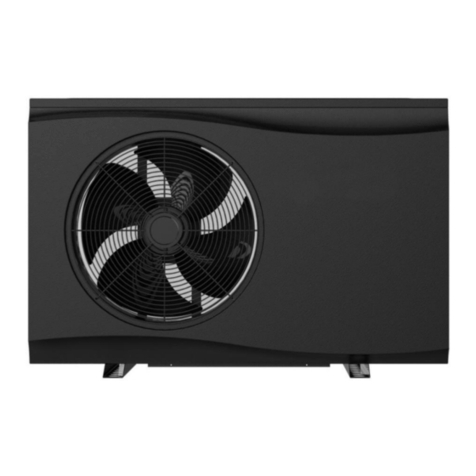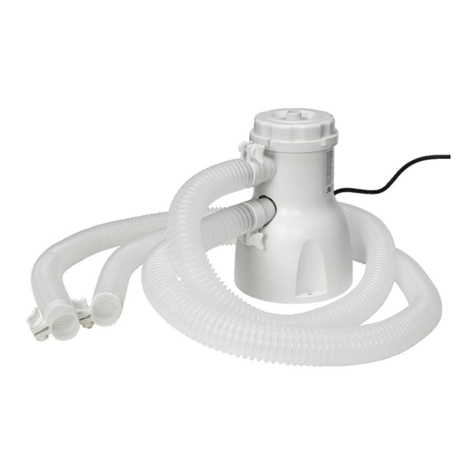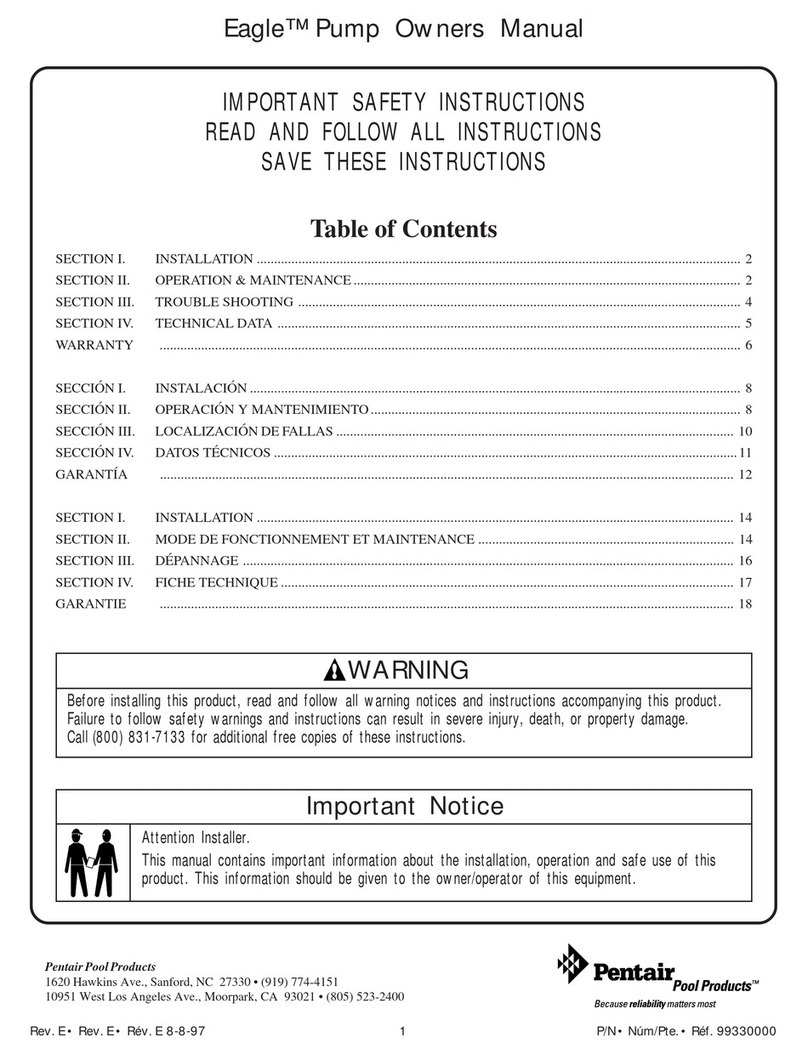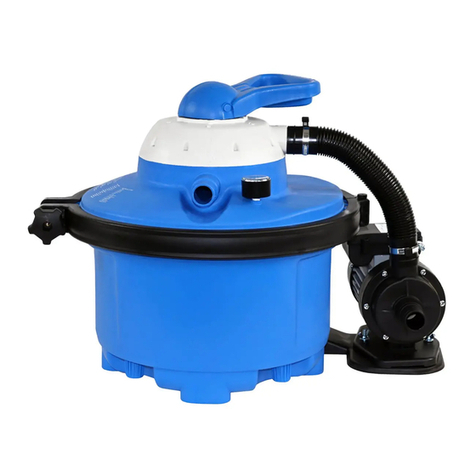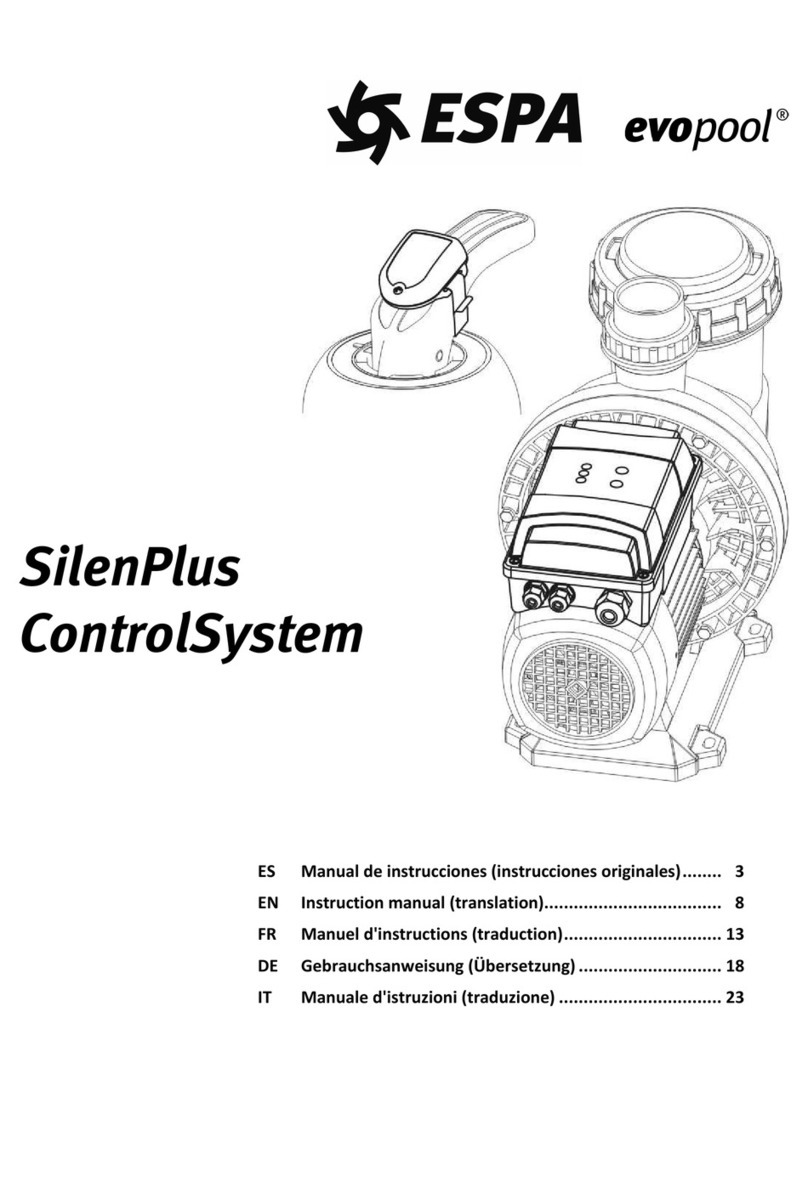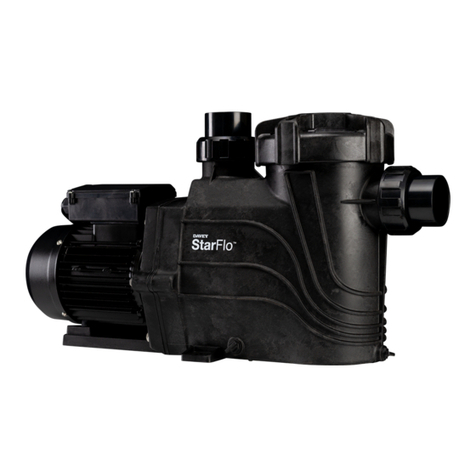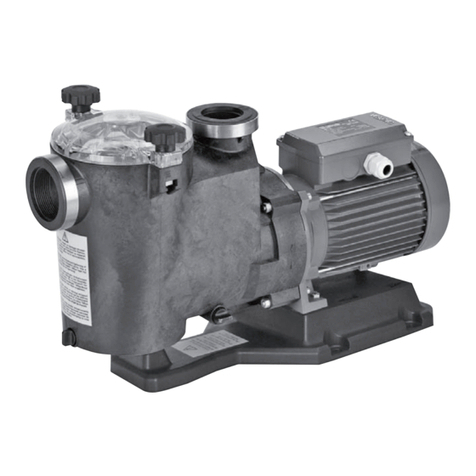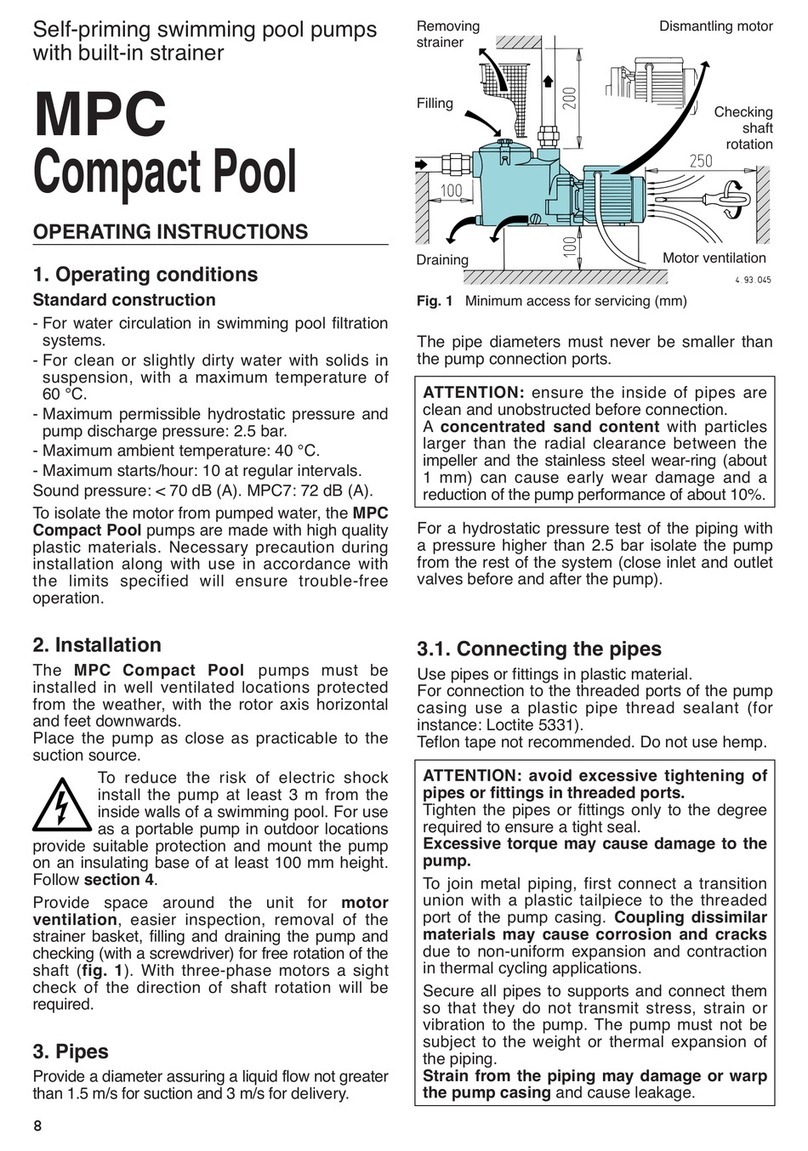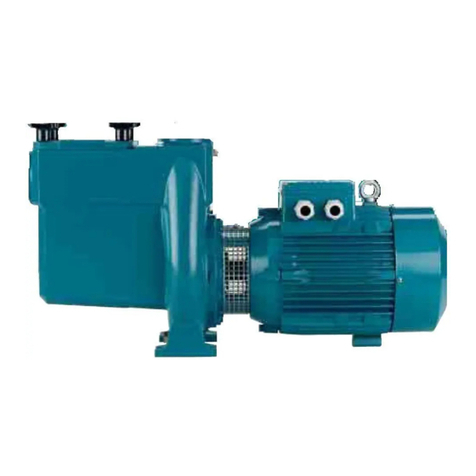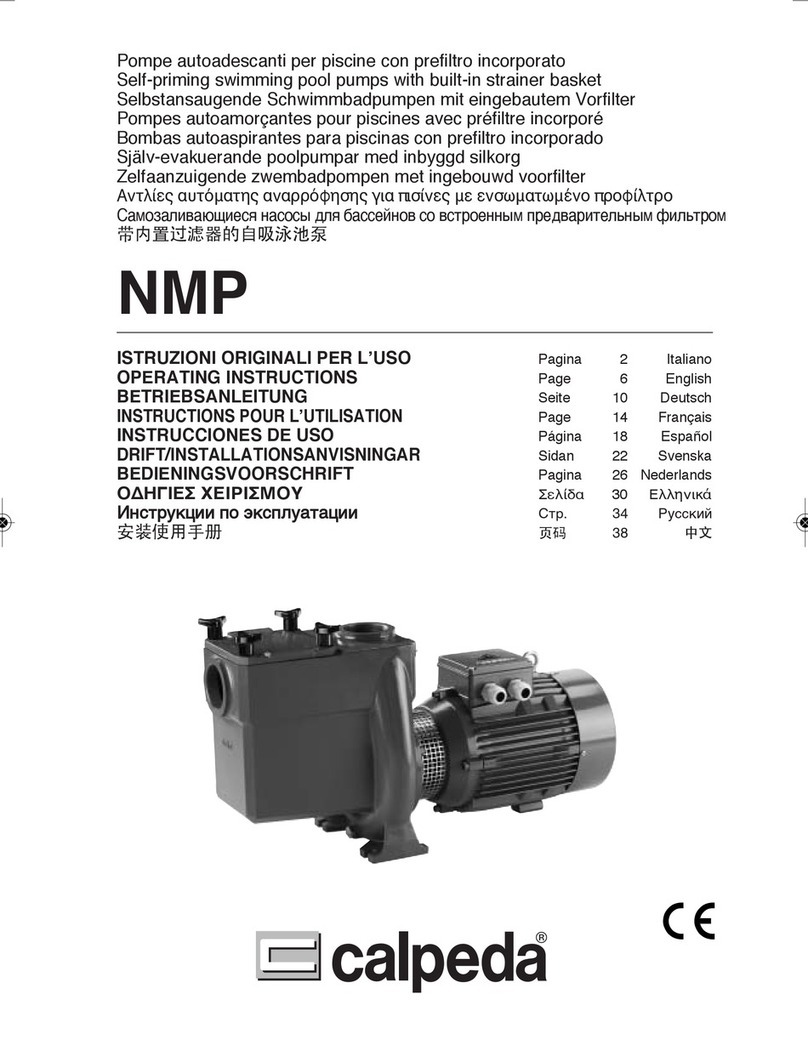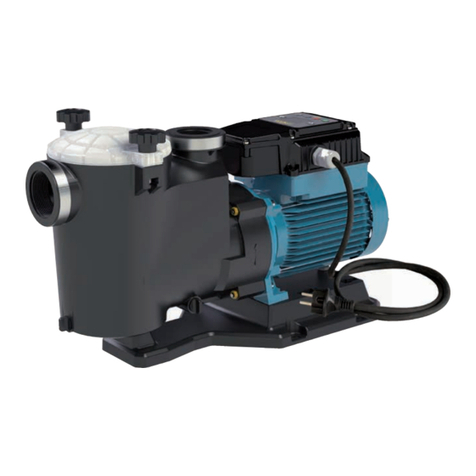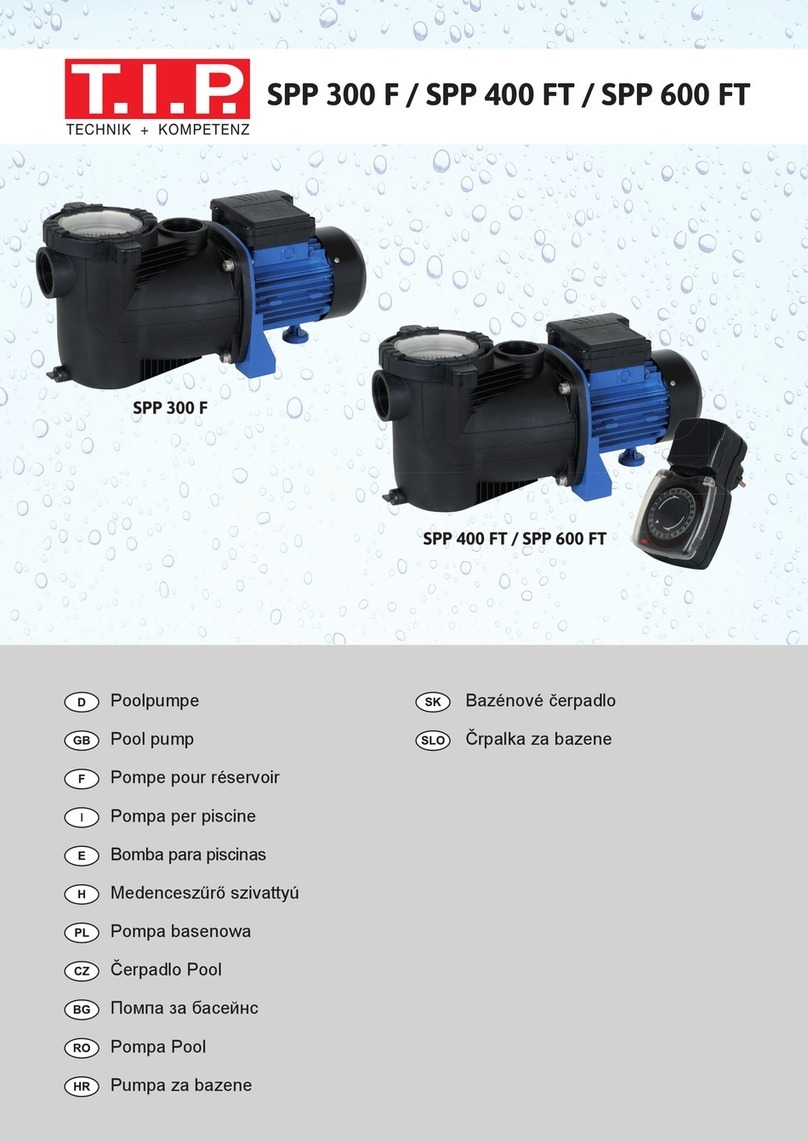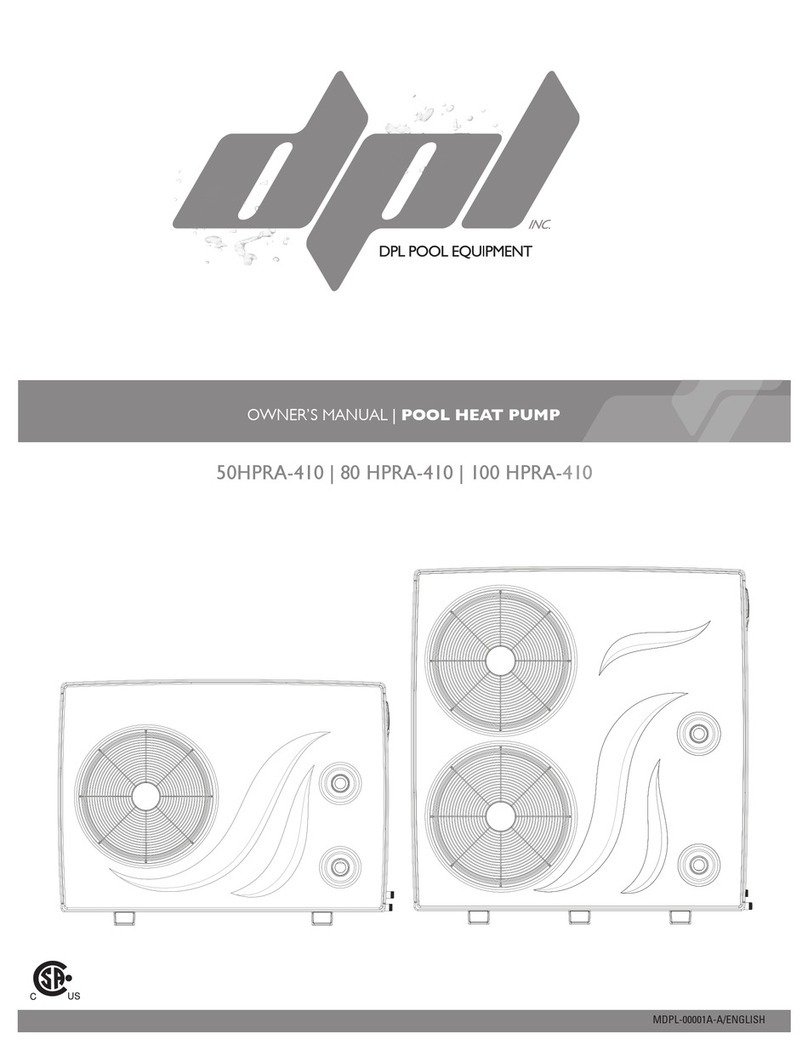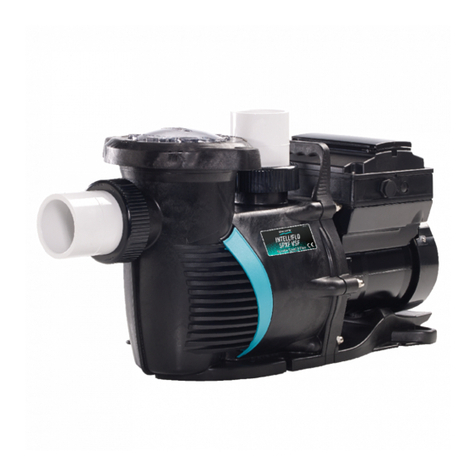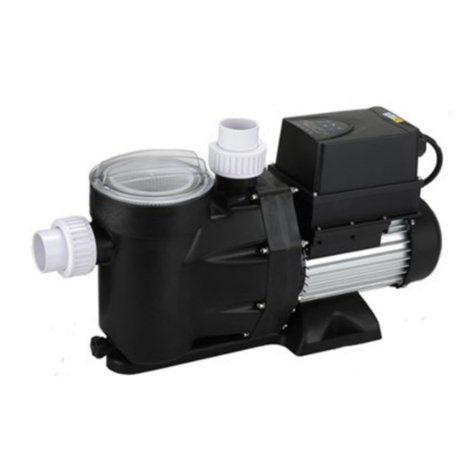
6.4.3. Tubazione di mandata
Nella tubazione di mandata installare una saracine-
sca per regolare portata e prevalenza.
Installare un indicatore di pressione (manometro).
Quando il dislivello geodetico in mandata è maggiore di
15 m, tra pompa e saracinesca inserire una valvola di
ritegno per proteggere la pompa da “colpi d’ariete”.
6.5 Collegamento elettrico
Il collegamento elettrico deve essere eseguito da
un elettricista qualifi
cato nel rispetto delle
prescrizioni
locali.
Seguire le norme di sicurezza.
Eseguire il collegamento a terra. Collegare il condutto-
re di protezione al morsetto contrassegnato con il sim-
bolo .
Confrontare la frequenza e la tensione di rete con i dati
di targa e collegare i conduttori di alimentazione ai mor-
setti secondo il corrispondente schema riportato all’in-
terno del coperchio della scatola morsetti.
Con motori di potenza ≥5,5 kW evitare l’avviamen-
to diretto. Prevedere un quadro con avviamento
stella/triangolo o altro dispositivo di avviamento.
ATTENZIONE: non fare mai cadere una
rondella o altre parti metalliche nel
passaggio cavi interno tra scatola morsetti e
statore. Se accade, smontare il motore e
recuperare la parte caduta.
Se la scatola morsetti è munita di pressacavo usare
un cavo di alimentazione flessibile tipo H07 RN-F con
sezione del cavo pari o superiore (cap. 12.3 TAB 1).
Se la scatola morsetti è munita di anello di tenuta
effettuare il collegamento attraverso tubo.
Per l’uso in una piscina (solamente quando all’inter-
no non vi sono persone), vasche da giardino o posti
similari, nel circuito di alimentazione deve essere
installato un interruttore differenziale con una cor-
rente residua (IΔN) ≤30 mA.
Installare un dispositivo per la onnipolare disinser-
zione dalla rete (interruttore per scollegare la pompa
dall’alimentazione) con una distanza di apertura dei
contatti di almeno 3 mm.
Con alimentazione trifase installare un adeguato sal-
vamotore con curva D come da corrente di targa.
Le elettropompe monofasi
NMPM,
sono fornite con
condensatore collegato ai morsetti e (per 220-240 V -
50 Hz) con termoprotettore inserito.
7 AVVIO E IMPIEGO
7.1 Controlli prima dell’accensione
L’apparecchio non deve essere messo infunzione in
presenza di parti danneggiate.
7.2 Primo avviamento
ATTENZIONE: evitare assolutamente il funzionamento
a secco, neanche per prova.
Avviare la pompa solo
dopo averla riempita completamente di liquido.
Con la pompa sopra il livello dell’acqua da sollevare
(funzionamento in aspirazione, riempire la pompa con
acqua fino al livello della bocca aspirante, attraverso l’a-
pertura sul filtro togliendo il coperchio (fig. 2).
ATTENZIONE: per la spedizione il coperchio è chiu-
so provvisoriamente con dadi esagonali. Sostituirli
con i volantini (15.12) che si trovano all’interno del
prefiltro.
Con il livello dell’acqua in aspirazione sopra la
pompa (funzionamento sotto battente, riempire la
pompa aprendo lentamente e completamente la saraci-
nesca nel tubo aspirante, tenendo aperta la saracinesca
in mandata per far uscire l’aria.
Prima dell’avviamento, controllare che l’albero giri a
mano.
All’avviamento, con alimentazione trifase verificare
che il senso di rotazione corrisponda a quello indicato
dalle frecce sul corpo pompa: orario guardando il motore
dal lato ventola; in caso contrario, togliere l’alimentazione
elettrica e invertire fra loro i collegamenti di due fasi.
Con il funzionamento in aspirazione può essere neces-
sario attendere qualche minuto per ottenere l’uscita
dell’acqua dalla bocca di mandata.
Controllare che l’elettropompa lavori nel suo campo di
prestazioni e che non venga superata la corrente assor-
bita indicata in targa. In caso contrario regolare la sara-
cinesca in mandata.
7.3 SPEGNIMENTO
L’apparecchio deve essere spento in ogni caso
in cui vi fossero anomalie di funzionamento.
(vedi ricerca guasti).
Il prodotto è progettato per un funzionamento continuo,
lo spegnimento avviene solamente scollegando l’ali-
mentazione mediante i previsti sistemi di sgancio (vedi
par. “6.5 Collegamento elettrico”).
8 MANUTENZIONE
Prima di ogni intervento è obbligatorio mettere l’appa-
recchio fuori servizio scollegando ogni fontedi energia.
Se necessario rivolgersi ad elettricista o tecnico esperto.
Ogni operazione di manutenzione, pulizia o
riparazione effettuata con l’impianto elettrico
sotto tensione, può causare gravi incidenti,
anche mortali, alle persone.
Se il cavo di alimentazione è danneggiato, esso
deve essere sostituito dal costruttore o dal suo
servizio assistenza tecnica o comunque da una
persona con qualifica similare, in modo da
prevenire ogni rischio.
Nel caso di manutenzioni straordinarie, o di interventi di
manutenzione che necessitano lo smontaggio di parti
dell’apparecchio, il manutentore deve essere un tecnico
qualificato in grado di leggere e comprendere schemi e
disegni.
È opportuno tenere un registro di tutti gli interventi effet-
tuati.
ON
IT
NMP Rev. 18 - Istruzioni originali Pagina 5 / 64
IST NMP Rev18 10_2022.qxp_MXS 11_03con gall 21/09/22 12:31 Pagina 5
